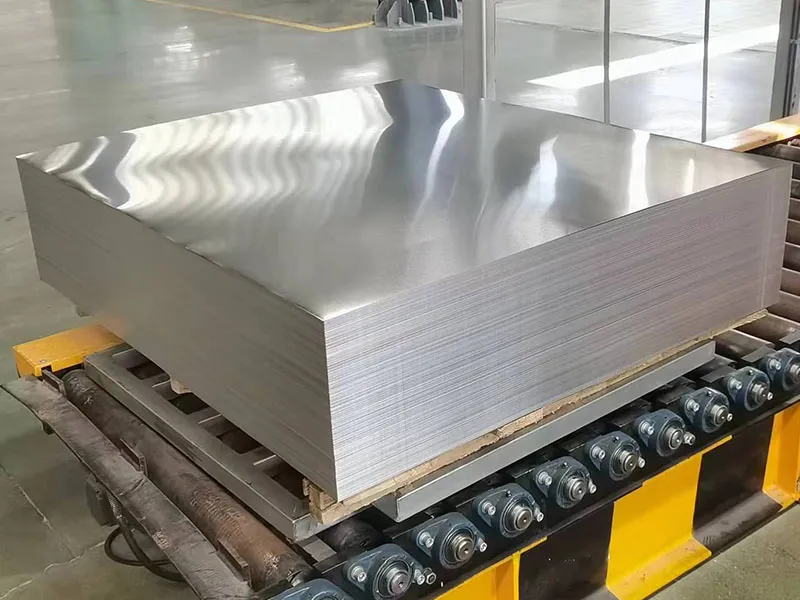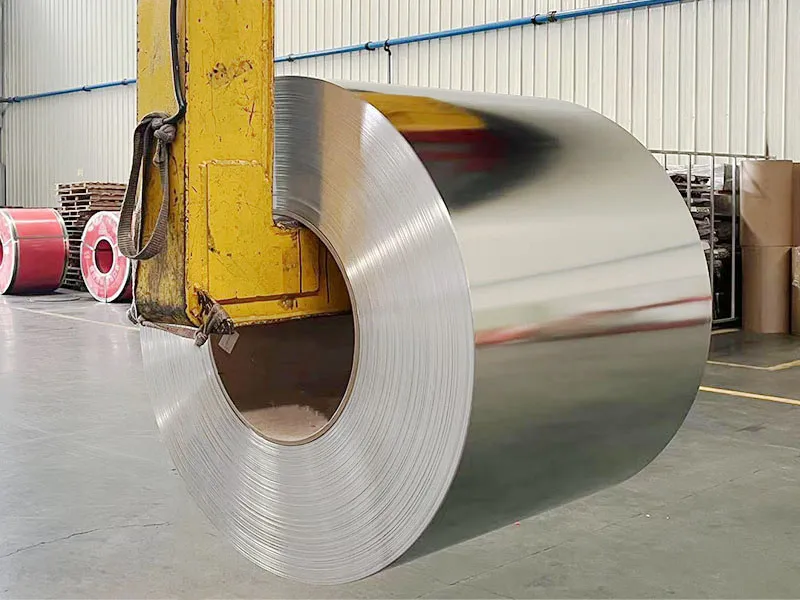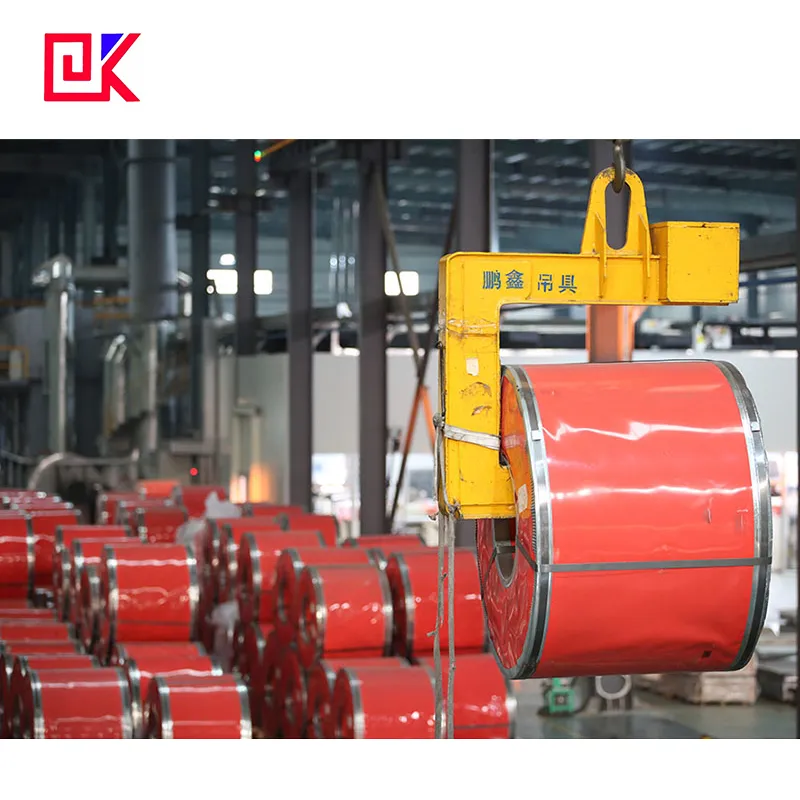In the modern packaging industry, tin plate sheets (tin-coated steel) are widely used in food and beverage packaging due to their excellent strength, plasticity and durability. Especially in the beverage industry, tin plate sheet beverage cans have become the preferred material due to their good freshness preservation effect and beautiful appearance. However, although tin plate sheets have many advantages, they are also susceptible to oxidation and corrosion due to their metallic properties. Therefore, tin plate sheet beverage cans need to be rust-proofed during the production process to ensure that they can maintain good performance and hygienic safety for a long time.
So, why do beverage cans made of tin plate sheets need to be rust-proofed? What are the specific methods of rust-proofing? How can we ensure the long-term stability of the rust-proofing effect?
This article will explore the importance of rust-proofing of tin plate sheet beverage cans, common rust-proofing techniques, and various aspects that need to be considered in the rust-proofing process from multiple dimensions.

Why does tin plate sheet rust?
What are the metallic properties of tin plate sheets?
Tin plate sheet is based on low carbon steel, and then coated with a thin layer of tin (usually 0.08 mm), which not only has an anti-corrosion effect, but also gives the tin plate sheet good gloss and workability. However, although the surface of the tin plate sheet is protected by a tin layer, it is still metal in nature, and exposure to moisture, oxygen, acidic substances in the air may cause metal corrosion and rust.
How do moisture, oxygen and acidic substances cause tin plate sheet to rust?
When metal comes into contact with moisture and oxygen in the air, especially in a humid environment, oxidation reactions will occur. For tin plate sheet, although the tin layer can play a certain protective role, if the tin layer is flawed, damaged or worn, the iron-based material is easily corroded when exposed to the external environment, especially in an acidic environment. The high acidity of acidic beverages will accelerate this process. If the beverage can is not treated with rust prevention, corrosion may occur, affecting the quality of the beverage, the durability of the can body, and may even have adverse effects on consumer health.

The necessity of rust prevention: why can't it be ignored?
How does rust prevention of tin plate sheet ensure food safety?
As a food container, the most important function of beverage cans is to ensure the safety of beverages in the package. If the tin plate sheet can is corroded, it will not only affect the structural strength of the tin plate sheet, but may even cause the penetration of chemicals, thereby contaminating the beverage. Anti-rust treatment can effectively prevent metal rust from directly contacting the beverage, reduce the dissolution of harmful substances, and ensure the hygiene and safety of the beverage. Especially when packaging acidic beverages (such as juice, carbonated beverages, etc.), anti-rust treatment is particularly important.
What role does rust prevention treatment play in extending the shelf life of tin plate sheet?
In addition to ensuring food safety, rust prevention treatment can also significantly extend the shelf life of beverage cans. Rust will not only make the can body brittle and reduce its compressive strength, but also affect the sealing performance of the can body, causing air and moisture to penetrate, thereby reducing the quality of the beverage, worsening the taste, and even expiration. Therefore, by rust prevention treatment of tin plate sheet, rust can be effectively prevented from destroying the sealing of the can body, thereby greatly extending the shelf life of the beverage.

What are the common rust prevention treatment methods for tin plate sheet?
The role and importance of electroplated tin layer on tin plate sheet
Electroplated tin layer is a common method to prevent rust on tin plate sheet. Through the electroplating process, a thin layer of tin is plated on the surface of the steel plate. This layer of tin has good corrosion resistance and can effectively prevent moisture and oxygen from contacting the metal substrate, thereby avoiding the occurrence of oxidation reactions. For beverage cans, the tin layer not only has an anti-rust effect, but also provides a certain glossiness, enhancing the beauty and market appeal of the can body.
However, the electroplated tin layer is not a panacea. The thickness and uniformity of the tin layer directly affect its anti-rust effect. During the processing, if the tin layer is uneven or has defects, it may cause corrosion in local areas. Therefore, it is crucial to ensure the quality and consistency of the tin layer during the production process.
Other anti-rust treatments: coatings and anti-corrosion inner coatings
In addition to the electroplated tin layer, manufacturers can further enhance the anti-rust effect through other methods. For some products, the inner coating can effectively protect the interior of the beverage can from corrosion. Common inner coatings include epoxy resin coatings, polyester coatings, etc., which can isolate the contact between the acidic components in the beverage and the metal of the can body, thereby preventing metal corrosion.
The key to coating technology lies in the choice of coating materials and their thickness. If the coating is too thin, it may not fully prevent chemical reactions, while too thick a coating may affect the taste of the beverage and the sealing of the can body. Therefore, the quality control of the coating is an important link that cannot be ignored in the anti-rust treatment process.
Hot-dip galvanizing and chemical galvanizing
Hot-dip galvanizing and chemical galvanizing are another common metal anti-rust technology. By immersing the tin plate sheet can in a high-temperature zinc solution, the zinc combines with the metal surface to form a corrosion-resistant protective layer. Compared with the electroplated tin layer, hot-dip galvanizing provides a more robust protection, especially in high humidity or extreme climate conditions.
However, the application of hot-dip galvanizing is relatively limited because its surface is rough and may affect the printing effect. In order to balance the anti-rust effect and appearance, manufacturers usually choose to first tinnize and then add an anti-rust coating to take into account both functionality and aesthetics.

How to ensure the long-term stability of the anti-rust effect?
Quality control of anti-rust treatment: How to achieve the best effect?
Ensuring the stability of the anti-rust treatment effect requires strict quality control during the production process. First of all, the selection of raw materials is crucial, and the quality of tin plate sheet steel directly affects the final anti-rust effect. Secondly, during the anti-rust treatment process, the thickness of the tin layer, the uniformity of the coating, and the bonding strength between the coating and the metal surface need to be precisely controlled.
In addition, the production process may involve processes such as high temperature and chemical reagents, and strict environmental control is required to avoid interference of pollutants with the anti-rust treatment. Regular testing and evaluation are carried out to ensure that each batch of tin plate beverage cans produced can meet the established anti-rust standards.
Precautions for can storage and transportation
Even after careful anti-rust treatment, tin plate beverage cans may still weaken their anti-rust effect during storage and transportation due to changes in the external environment or improper handling. Therefore, during storage and transportation, manufacturers need to take necessary protective measures to prevent tin plate cans from being damp, exposed to the sun, or contacting with corrosive substances. Keeping dry and avoiding drastic temperature changes are important guarantees for maintaining anti-rust effects.

